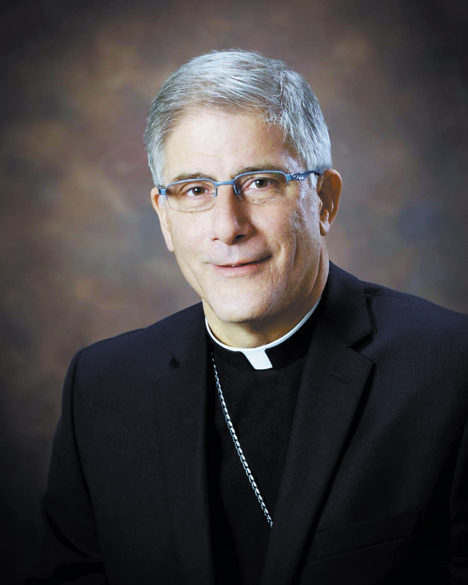By Bishop Joseph R. Kopacz, D.D.
“God of everlasting mercy, who in the very recurrence of the paschal feast kindle the faith of the people you have made your own, increase, we pray, the grace you have bestowed, that all may grasp and rightly understand in what Font they have been washed, by whose Spirit they have been reborn, by whose Blood they have been redeemed.”
This opening Collect of the Second Sunday of Easter (or of Divine Mercy) is the profound prayer of the priest celebrant on behalf of all gathered that all may grasp and rightly understand the mystery of God’s plan of salvation as disciples baptized into the death and resurrection of Jesus Christ. This is the Water, the Blood, and the Spirit of which St. John eloquently speaks in his first letter. This is the hope of Easter that St. Augustine shared in one of his Easter Octave Sermons. “This is the octave day of your new birth. … When the Lord rose he put off the mortality of the flesh; His risen body was still the same body, but it was no longer subject to death. By His resurrection He consecrated Sunday as the Lord’s day.”

As Catholics we are a people of tradition reaching back nearly 2000 years into the font of Sacred Scripture. This is evident in the link between the Gospel on Divine Mercy Sunday and the Sacrament of Confirmation now underway throughout the Diocese of Jackson.
The crucified and resurrected Lord appeared to the 11 disciples huddled in fear in the upper room with his gift of peace and the breath of the Holy Spirit. Confirmation is conferred with the Invocation of the Holy Spirit sealed in Sacred Chrism, and the Lord’s own greeting, “peace be with you.” The Holy Spirit is ceaselessly at work in whom we have been reborn as new creations to serve God’s divine plan of mercy. It is gift and mystery that reconcile and raise up those under the yoke of sin and shame.
“As the Father has sent me, so I send you,” so Jesus instructs his adopted brothers. They rightly could have asked, “where are you sending us, Lord?” Their marching orders were clear, yet shrouded in mystery. Go, preach a Baptism of Repentance for the forgiveness of sins, and make disciples of all the nations while you’re at it. The Baptism of Repentance for the forgiveness of sin is the Font in which we have been washed, our covenant with God renewed on Easter Sunday.
The joy with which St. Augustine addressed the newly baptized at Easter is the fruit of the Holy Spirit, and the Lord’s gift of peace. “I speak to you who have just been reborn in baptism, my little children in Christ, you who are the new offspring of the Church, gift of the Father, proof of Mother Church’s fruitfulness. All of you who stand fast in the Lord are a holy seed, a new colony of bees, the very flower of our ministry, and fruit of our toil, my joy and my crown.”
The Water, the Spirit and the Blood are the cord of three strands that cannot be easily undone. The Blood, the third element, was splattered everywhere during the Lord’s passion and along with water flowed from the side of the expired Savior on the Cross. In that moment of divine mercy, we see the flowing waters of Baptism and the Sacrament of the Body and Blood of the Lord. For the first time during the Easter season, the Eucharistic Banquet is now open to the newly baptized who can partake fully of the mysteries of God’s love, the fruit of full initiation.
In another lifetime before the pandemic, we were reading about surveys revealing that many Catholics no longer believe in the real presence of the Body and Blood of the Lord under the appearance of bread and wine. This central dogma of our faith has been a stumbling block for many since our Lord’s Bread of Life Discourse in John’s Gospel. (Chapter 6)
The following is taken from the Catechetical Lectures of St. Cyril of Jerusalem to those about to be baptized in the 4th century. “Since Christ himself has declared the bread to be his body, who can have any further doubt? Since he himself has said quite categorically, this is my blood, who would dare to question it and say that it is not his blood? Therefore, it is with complete assurance that we receive the bread and wine as the body and blood of Christ. … Do not then regard the Eucharistic elements as ordinary bread and wine. They are in fact the body and blood of the Lord, as he himself declared. Whatever your senses may tell you; be strong in faith.”
As a people of tradition, by God’s grace, may we grasp and rightly understand the length and breath, height and depth of our Easter faith.
